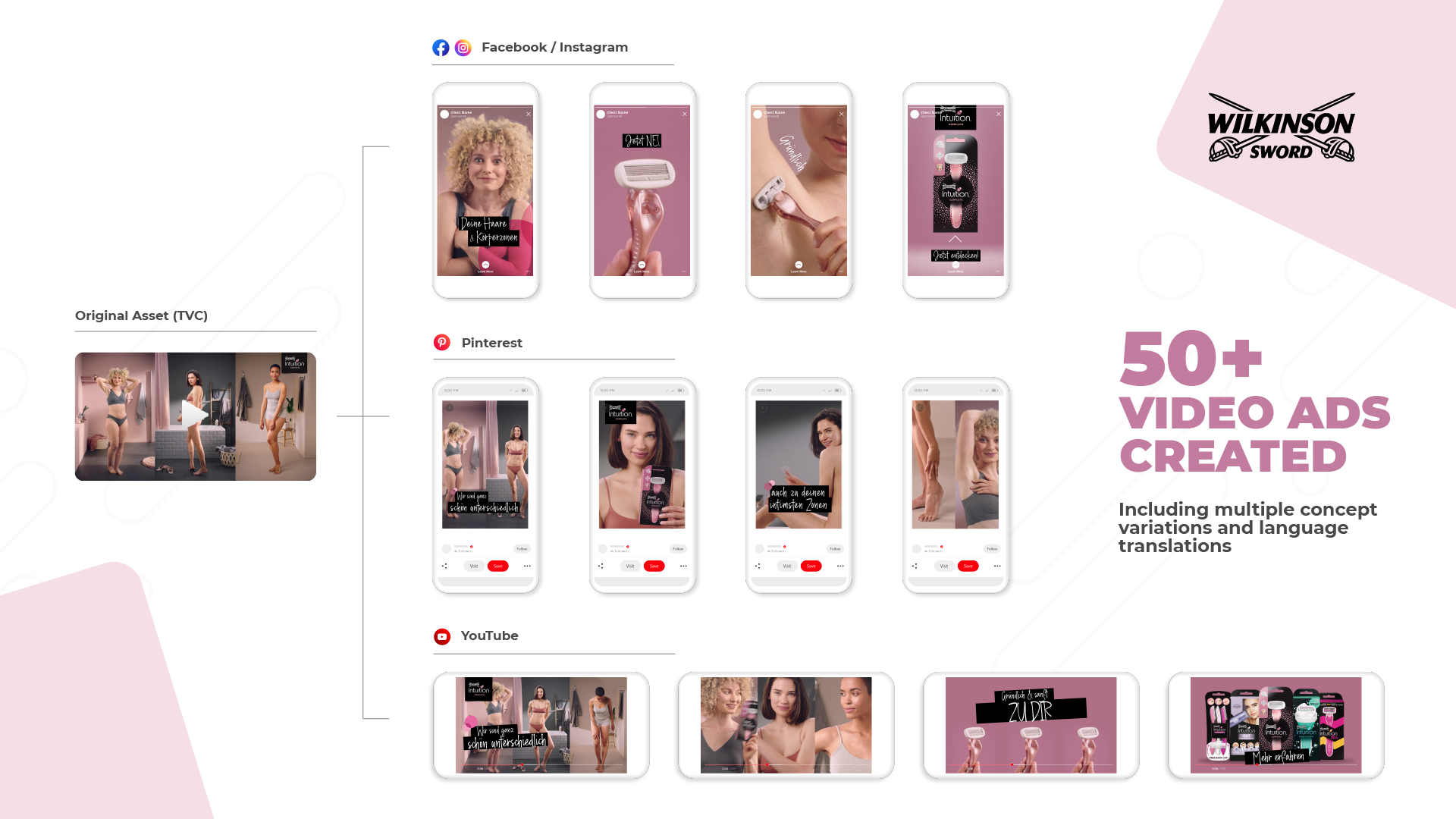Let’s face it, creative has become complicated. That isn’t to say that creative was ever easy. Far from it. It is that now, on top of the difficult task of putting forward a compelling concept that will resonate with an audience, advertisers also need to consider how their creative will play out on the myriad of different platforms and placements that are on offer.
The increasing fragmentation of the media landscape—brought about by the rise of digital—has presented brands with a smorgasbord of channels and ad placements to choose from. However, it pays not to be narrow-minded in your selections. Rather, in order to successfully reach your target audiences, you need to adopt a broad, far-reaching approach.
This is because your target audiences don’t reside on just one channel. They are also fragmented, splitting their time between a growing number of platforms, each of which has its own subtle differences and unique technical characteristics.
One Size Doesn't Fit All
A TVC originally created for traditional television won't be as effective when applied directly to digital alternatives such as Connected TV, or Facebook In-Stream. Similarly, a piece of creative produced for Instagram Stories, may seem out of place when deployed on TikTok.
The many differences between each channel means that copying and pasting your creative simply won’t work—at least not in an optimal way.
Optimized Video Creative
In order to produce video creative that will enable you to maximize your media investment across a range of different channels, you need to create a number of variations, each optimized for their intended placement.
It is important to note that “optimizing” doesn’t simply mean reframing your video into a new aspect ratio. Although this is an important step in the process, optimization goes much deeper than meeting specific technical requirements. In order to truly optimize your video creative, you need to address the subtle differences between each platform, both on an aesthetic and user-experience level.
For instance, the Glovo example above features raw video footage in order to tap into TikTok’s unpolished, authentic spirit. The Nescafe example, being placed in Facebook’s feed—where the majority of audiences will view it with sound disabled—was designed to deliver a strong message without any reliance on audio. Lastly, the GLD Shop video doubles down on the use of large, striking typography, helping to effectively communicate the ad's message to the majority of YouTube audiences who will view it on a small, mobile device.
These three examples are just a few of the many cross-channel creative considerations that should be injected into your video ads in order for them to deliver the strongest possible performance.
Optimization Requires Modification
To build a set of video ads that covers off all of your bases, spanning across a number of different platforms and placements, your creative is always going to need to undergo a process of modification.
You may have invested in a TVC that you wish to utilize across digital. Or, you may have some creative that is performing well on one platform and you want to expand its reach by adding additional channels. No matter what the situation is, if you simply reuse, rather than recraft and reconcept, the performance is likely to drop.
The level of modification that needs to take place will depend on the original piece of creative and the platform or placement that it is being adapted for. These adjustments can often be very subtle, however, they can make all the difference. For example, take a look at the two examples below for Scotch brand The Glenlivet.
The ad on the left was created for Facebook & Instagram In-Feed, whilst the one on the right is a Video Pin, produced for Pinterest. At first glance they almost look indistinguishable, however, upon closer inspection you will notice some small, yet important differences.
First, the Facebook & Instagram ad has a faster, snappier first two seconds, stretching the text and then using a zoom effect to capture audience attention from the get-go. This technique was used in order to counteract the view-time drop off that occurs on Facebook and Instagram ads after the three-second mark. The Pinterest example on the other hand is able to take a more simple and clean approach, fitting in with the platform’s visual aesthetic.
The second, and perhaps the most obvious difference between the two examples, is that the Pinterest ad utilizes a white border to help frame the creative. Borders work particularly well on Pinterest as the platform’s grid layout means that a number of different pieces of content are on the audience’s screen at any given time. By utilizing a border, you can then have your product come in and out of the frame, creating a “breaking the border” effect, helping to capture attention.
Cross-Channel Creative Packages
When you combine the need to configure creative to suit each of your chosen platforms, along with the need to create variations based on audience segments, languages, and featured products—the number of assets that you require can become rather high, rather quickly. As stated at the beginning of this article: creative has become complicated.
But it doesn’t need to be. Shuttlerock’s mission is to enable brands and agencies to overcome this challenge by providing easy-to-order creative packages, designed in-house by expert teams familiar with the ins and outs of every digital platform.
For example, below you will see a project overview, summarising the creative package that helped Wilkinson Sword build brand awareness for their new Intuition Complete product.

As you can see, a diverse range of video assets were created, each optimized for their respective platform and placement. This equipped Wilkinson Sword with all the video creative they needed in order to run a successful cross-channel brand-building campaign.
In Summary
A diverse media landscape calls for diverse creative. Video campaigns on digital will often require ten's, if not hundreds of assets, each tailored to fit their designated placement. Although challenging, when done correctly, multi-channel video campaigns enable brands to unlock new audiences, and take advantage of the unique ad offerings of a growing list of digital platforms.











.png?width=159&height=159&name=Group%201000001080%20(1).png)

